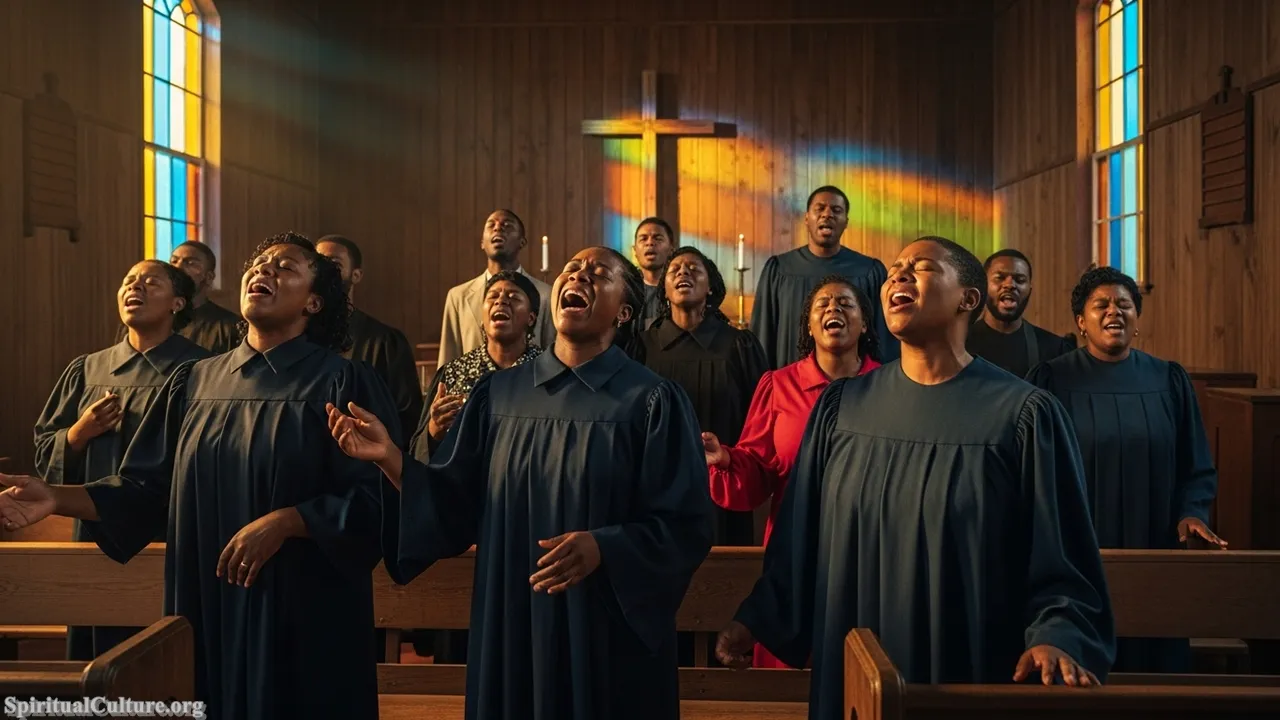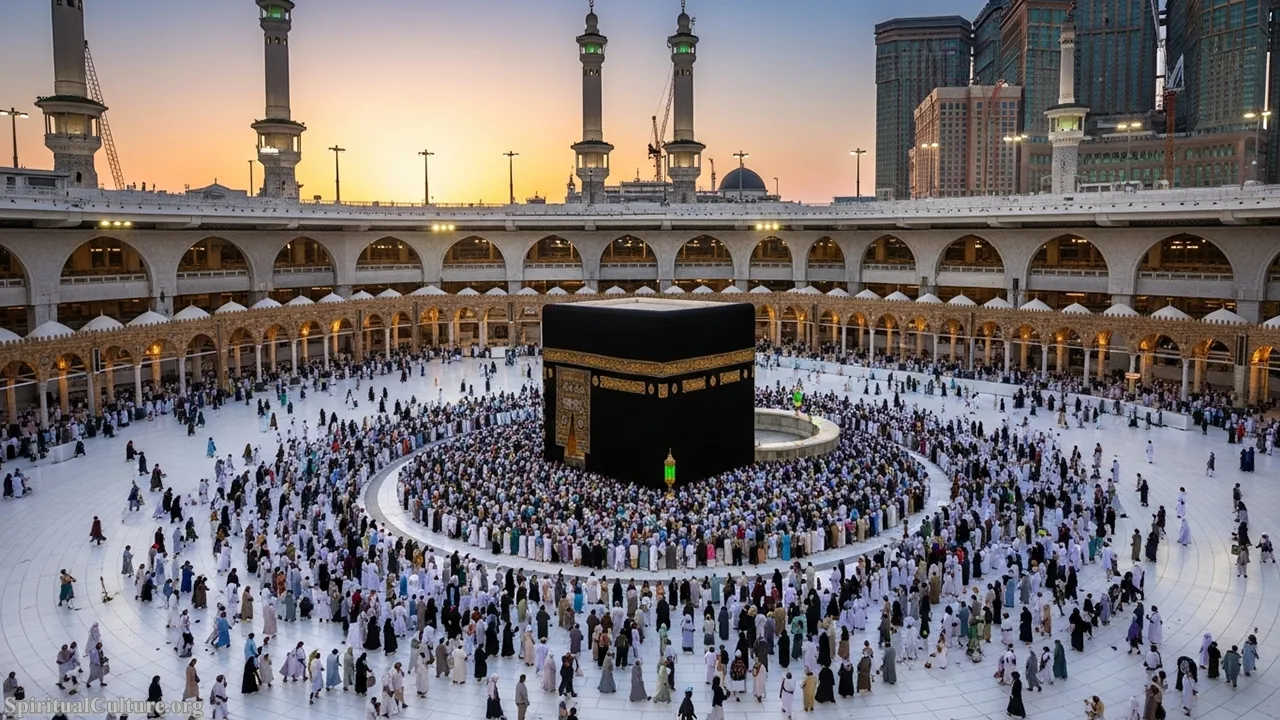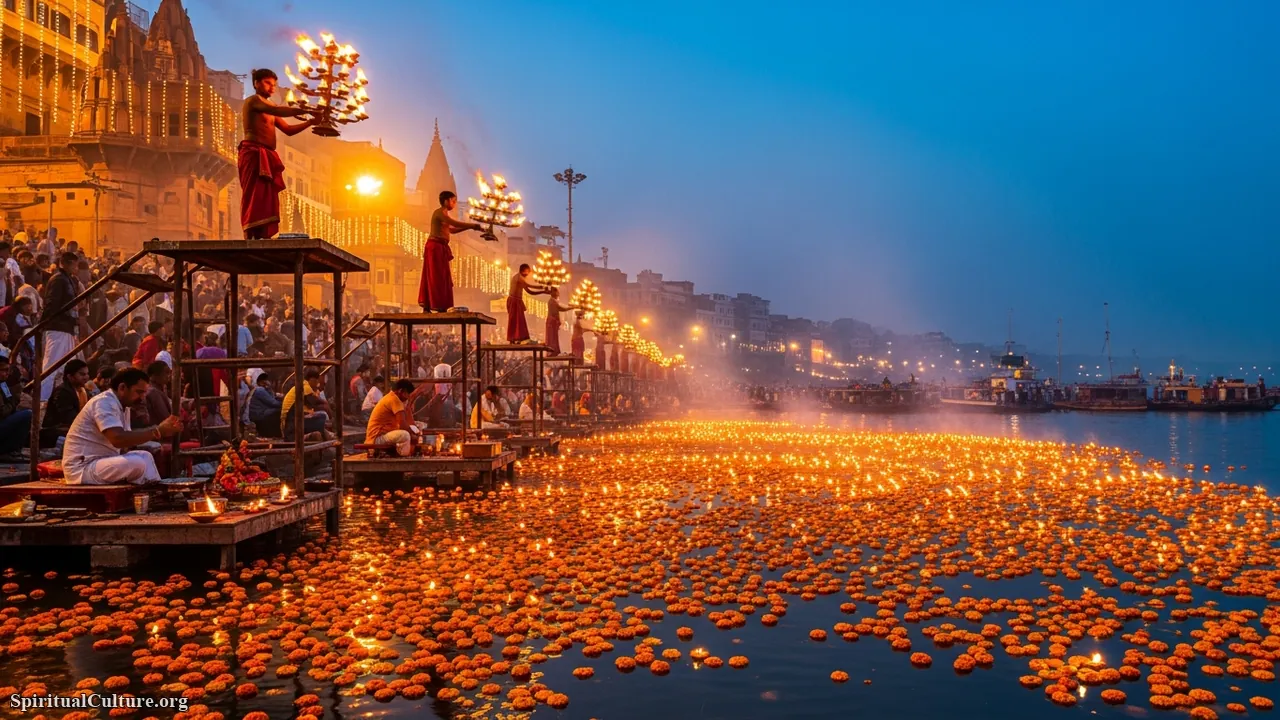From dusty deserts to icy peaks, riverbanks to temple stairs, humans have always walked toward something greater — toward mystery, toward mercy, toward the presence of the sacred. Across cultures, faiths, and centuries, the act of pilgrimage speaks a silent language — one understood by seekers everywhere. It is a journey of the body that stirs the soul.
What makes a place sacred? What makes a journey holy? Why do millions of people leave their homes each year, often enduring hardship and uncertainty, just to reach a mountain, a stone, a tree, a river, or a shrine?
In this article, Spiritual Culture invites you to walk deeper into the ancient tradition of pilgrimage. We will explore how sacred journeys reflect humanity’s spiritual yearning, how they differ across cultures, and how — underneath every outward step — lies an inward transformation.
The Pilgrimage as an Archetype
Pilgrimage is not just a religious ritual — it is a profound metaphor for the human experience.
Movement Toward the Sacred
At the heart of pilgrimage lies a primal truth: that the sacred often calls us away from comfort. Whether it’s the Hajj in Islam, the Camino de Santiago in Christianity, or the Kumbh Mela in Hinduism, each journey involves physical departure and spiritual reorientation.
Pilgrimage asks us to step away from the noise of daily life — and step toward something deeper. In every culture, the sacred is often found “elsewhere” — on a mountain, in a temple, across a river. The journey is part of the transformation.
Inner Journey Reflected in Outer Steps
Carl Jung once said that symbols speak the language of the soul. The journey of a pilgrim is symbolic of every inner transformation: letting go of the old, facing trials, discovering clarity, and arriving — not just at a destination, but at a new understanding of self and spirit.
In this way, pilgrimage is both literal and metaphysical. It reshapes the body and reforms the heart.
Pilgrimage in Major Religious Traditions
Let us now walk through some of the world’s great spiritual traditions and see how each embraces the sacred journey in its own distinct way.
Islam: The Hajj and Umrah
The Sacred Journey to Mecca
In Islam, the Hajj is one of the Five Pillars of the faith — a mandatory pilgrimage for every Muslim who is physically and financially able, at least once in a lifetime. Millions of Muslims travel to Mecca, in Saudi Arabia, during the month of Dhu al-Hijjah, retracing the footsteps of Abraham, Hagar, and the Prophet Muhammad.
“And proclaim the Hajj to the people. They will come to you on foot and on every lean camel; they will come from every distant pass.” — Quran 22:27
Each ritual act — the circling of the Kaaba, the running between Safa and Marwah, the standing at Arafat — is infused with deep symbolism, sacrifice, and surrender. The journey erases distinctions of race, wealth, and nationality — all are pilgrims in white, equal before God.
Umrah: A Lesser Yet Profound Pilgrimage
Outside of the Hajj season, many Muslims undertake Umrah, a lesser pilgrimage that retains great spiritual value. It is a reminder that the door to the sacred is always open.
Christianity: Pilgrimages of Faith and Healing
Walking the Way: The Camino de Santiago
Perhaps the most famous Christian pilgrimage is the Camino de Santiago, or Way of St. James, leading to the cathedral in Santiago de Compostela, Spain. Pilgrims walk hundreds of miles, often through harsh terrain and inner trials, to honor the apostle James.
The journey becomes a symbol of discipleship — of walking with Christ, step by step.
Jerusalem, Rome, and Lourdes
Other significant Christian pilgrimage sites include:
- Jerusalem: where Jesus walked, taught, died, and rose again
- Rome: center of the Catholic Church and home to saints and martyrs
- Lourdes, France: a place of healing and Marian devotion
In each of these places, pilgrims seek encounter — not just with history, but with holiness.
“Blessed are those whose strength is in you, whose hearts are set on pilgrimage.” — Psalm 84:5
Hinduism: River, Temple, Mountain
The Kumbh Mela
Arguably the largest religious gathering in the world, the Kumbh Mela draws tens of millions to sacred rivers like the Ganges, Yamuna, and Sarasvati. Bathing in these waters is believed to cleanse sins and release the soul from cycles of rebirth.
Held every 12 years in rotation at four different sites, it is not only a pilgrimage but a living manifestation of collective faith.
The Char Dham Yatra and Varanasi
Hindus also revere the Char Dham — four sacred sites in India: Badrinath, Dwarka, Puri, and Rameswaram. Each represents a cardinal direction and a spiritual dimension. Varanasi, on the banks of the Ganges, is believed to grant liberation to those who die there.
Pilgrimage in Hinduism reflects cosmic geography — a sacred mapping of divine presence across the land.
Buddhism: Seeking Enlightenment on Foot
Following the Buddha’s Path
Buddhist pilgrims often journey to the Four Sacred Sites connected to the life of Gautama Buddha:
- Lumbini – birthplace
- Bodh Gaya – enlightenment
- Sarnath – first sermon
- Kushinagar – passing into Nirvana
These sites, scattered across India and Nepal, allow followers to retrace the Buddha’s path and deepen their own understanding of impermanence, compassion, and awakening.
Mount Kailash and Beyond
In Tibetan Buddhism, Mount Kailash is not only sacred — it is believed to be the cosmic axis of the universe. Circumambulating the mountain (a ritual called kora) is said to cleanse the soul and accelerate spiritual progress.
Pilgrimage in Buddhism is often contemplative — a walking meditation.
Judaism: Longing for Zion
Ancient Pilgrimages to Jerusalem
In biblical times, Jews were commanded to ascend to Jerusalem three times a year — during Passover, Shavuot, and Sukkot — to worship at the Temple. These journeys expressed not only obedience, but yearning.
“Three times a year all your men are to appear before the Sovereign LORD, the God of Israel.” — Exodus 34:23
After the destruction of the Second Temple, physical pilgrimage gave way to spiritual longing — expressed in prayers facing Jerusalem, in songs of exile, and in dreams of return.
The Modern Pilgrimage: Remembering and Reconnecting
Today, Jewish pilgrimage may include visits to the Western Wall, the tombs of revered sages, or Holocaust memorials. Each journey is a bridge — between past and present, land and soul.
Indigenous and Earth-Based Pilgrimages
Walking with the Land
Many Indigenous cultures regard land itself as sacred — not as a backdrop for worship, but as a living presence. Pilgrimages may not follow paved roads, but follow dreamlines, vision quests, and ancestral paths.
For example:
- Australian Aboriginal “Songlines” trace ancestral journeys across the continent.
- Native American vision quests involve solitude in sacred natural places.
- The Inca Trail leads to Machu Picchu, echoing ancient ceremonial routes.
These are not just physical journeys but communions — with Earth, spirit, and story.
Why Pilgrimage Endures
In a world of digital maps and instant access, why do people still walk hundreds of miles? Why fast, suffer, or sleep under the stars?
Because the Soul Still Longs
The modern world is fast, fragmented, and full of noise. Pilgrimage invites slowness. Presence. Embodiment. It connects us to a rhythm deeper than schedules — the rhythm of spirit and silence.
It allows us to:
- Step out of routine
- Confront our shadows
- Find companionship in strangers
- Reorient our lives around what is eternal
Because the Body Remembers
The body carries pain, memory, and hope. When we walk for something holy, the very act of moving becomes prayer. Blisters become offerings. Sweat becomes incense. Footsteps become mantras.
Pilgrimage in the Modern Age
Pilgrimages are not just for monks or mystics. Today, people from all walks of life take sacred journeys for different reasons:
- Healing after loss
- Seeking clarity during life transitions
- Giving thanks for recovery
- Exploring faith or interfaith dialogue
- Simply to slow down and feel God again
Even secular pilgrimages — to memorials, to childhood homes, to sites of inspiration — carry this sacred impulse.
Reflect and Reimagine
At its heart, pilgrimage is a movement toward the sacred. It is a step away from distraction and a step toward deep presence.
Where is your soul longing to go?
Maybe your journey is to a faraway mountain. Or maybe it’s to a quiet room in your own home. Either way, the sacred is waiting — not just at the end of the path, but in every step taken with intention.
“The longest journey,” the mystics say, “is the journey from the head to the heart.”
Let us walk it together.
— Spiritual Culture




